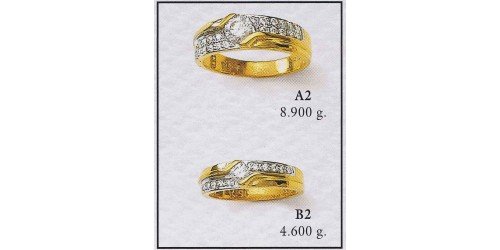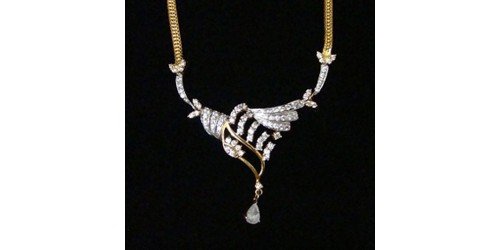Your shopping cart is empty!



Shopping Cart
0 item(s) - Rs.0.00Education
Difference between KDM Gold and regular gold. Why KDM gold is costlier than regular gold?
KDM tag is attributed to jewellery in which gold is soldered with cadmium.
In the conventional method, during manufacture of jewels, the crafted jewel pieces are soldered together using an alloy, thus reducing the purity of gold. To maintain the purity of gold in the manufacture of gold jewels, the crafted jewels pieces are soldered using a chemical cadmium (KDM).
For exchange of jewellery with KDM process, you get gold to gold price without wastage for its purity.
In the conventional method, during manufacture of jewels, the crafted jewel pieces are soldered together using an alloy, thus reducing the purity of gold. To maintain the purity of gold in the manufacture of gold jewels, the crafted jewels pieces are soldered using a chemical cadmium (KDM).
For exchange of jewellery with KDM process, you get gold to gold price without wastage for its purity.
What is a carat number?
The purity or fineness of gold in the jewellery is indicated by its carat number.
To make jewellery suitable for wear and tear, gold is blended with copper, silver and sometimes nickel to harden it. The carats tell you how much other metal has been added.
Gold carats are always denoted in twenty-fourths.
Thus pure gold (Au) has 24 carats - that is 24/24 parts by mass is gold. You never get 24 carat jewellery because it is so soft the particles would rub off on your skin the more you wore it, and it would thin after prolonged usage.
Twenty-two carat gold is 22/24 parts gold by mass or 91.6% gold. This means that the jewellery has only 8.4% other metal. Twenty-two carat gold jewellery is the most sought-after by customers as it is nearly pure.
Eighteen carat gold is 18/24 parts gold by mass or 75% gold. This means that only 25% of the jewellery is another metal.
The cost of the jewellery depends not only on the how much gold there is in it, but the cost of the other metals added. Copper is cheap, therefore gold jewellery made with copper is cheaper than gold jewellery made with silver.
22 carat gold jewellery will be a bright yellow. Mixed with copper, 18 carat gold will be less bright and 9 carat gold will be dull.
Gold is a famously inert metal - that is it doesn't react with any other chemicals. However, some of the other metals used in the alloy do react, especially copper, which corrodes. Thus people with 9 carat gold jewellery made with copper may find that the jewellery tarnishes and goes green or black, leaving marks on your clothes and skin. Therefore to retain the colour, go for the highest carat gold you can afford.
To make jewellery suitable for wear and tear, gold is blended with copper, silver and sometimes nickel to harden it. The carats tell you how much other metal has been added.
Gold carats are always denoted in twenty-fourths.
Thus pure gold (Au) has 24 carats - that is 24/24 parts by mass is gold. You never get 24 carat jewellery because it is so soft the particles would rub off on your skin the more you wore it, and it would thin after prolonged usage.
Twenty-two carat gold is 22/24 parts gold by mass or 91.6% gold. This means that the jewellery has only 8.4% other metal. Twenty-two carat gold jewellery is the most sought-after by customers as it is nearly pure.
Eighteen carat gold is 18/24 parts gold by mass or 75% gold. This means that only 25% of the jewellery is another metal.
The cost of the jewellery depends not only on the how much gold there is in it, but the cost of the other metals added. Copper is cheap, therefore gold jewellery made with copper is cheaper than gold jewellery made with silver.
22 carat gold jewellery will be a bright yellow. Mixed with copper, 18 carat gold will be less bright and 9 carat gold will be dull.
Gold is a famously inert metal - that is it doesn't react with any other chemicals. However, some of the other metals used in the alloy do react, especially copper, which corrodes. Thus people with 9 carat gold jewellery made with copper may find that the jewellery tarnishes and goes green or black, leaving marks on your clothes and skin. Therefore to retain the colour, go for the highest carat gold you can afford.
Tips in cleaning your Jewellery :
Your jewellery can accumulate dirt or dust over a short period of time. Lotions, body sprays, cosmetics, powders, soaps--even the natural oils from your skin--can create a film on gold, reducing their brilliance. In addition, chemicals in the air can oxidize the mountings. Keeping your jewellery clean will maximize its beauty.
Here are three ways you can clean your jewellery:
1. Soap-nut (ritho) Bath:
Prepare a small bowl of warm suds using soap-nut. Brush the jewellery with a soft brush until you have created a lather around it. Rinse off with warm water. Pat your jewellery dry with a soft, lint-free cloth.
2. Quick-Dip Method:
Buy one of the brand name liquid jewellery cleaners, choosing the one that is best for the kind of stones and metals in your jewellery. Read the label carefully and follow the instructions. Do not touch your clean diamonds with your fingers, as the oils from your hands will leave a film on the stone.
3. The Ultrasonic Cleaner:
There are many types of these small machines available to the public today. They will clean any piece of jewellery that can be soaked in a liquid within a matter of minutes. These machines often have a metal cup, which is filled with water and detergent. When the machine is turned on, a high-frequency turbulence is created. Avoid using ultrasonic cleaners on emeralds.
Here are three ways you can clean your jewellery:
1. Soap-nut (ritho) Bath:
Prepare a small bowl of warm suds using soap-nut. Brush the jewellery with a soft brush until you have created a lather around it. Rinse off with warm water. Pat your jewellery dry with a soft, lint-free cloth.
2. Quick-Dip Method:
Buy one of the brand name liquid jewellery cleaners, choosing the one that is best for the kind of stones and metals in your jewellery. Read the label carefully and follow the instructions. Do not touch your clean diamonds with your fingers, as the oils from your hands will leave a film on the stone.
3. The Ultrasonic Cleaner:
There are many types of these small machines available to the public today. They will clean any piece of jewellery that can be soaked in a liquid within a matter of minutes. These machines often have a metal cup, which is filled with water and detergent. When the machine is turned on, a high-frequency turbulence is created. Avoid using ultrasonic cleaners on emeralds.
Simple guidelines to keep your jewellery looking great for years :
1. Don’t wear your jewellery while doing rough work.
2. Hairspray, gel, body lotion, moisturizer, perfume, make-up, shaving cream and soap are chemicals that can leave a residue on jewellery, creating a dull film that is difficult to remove.
3. Always remove your jewellery before working with chlorine bleach. When silver is exposed to chlorine bleach, the chemical has an oxidizing effect on the metal, causing it to turn black. Chlorine is detrimental to gold as well.
4. Keep your jewellery dry.
5. When you are not wearing your jewellery, be sure to store it in a fabric-lined case or in plastic envelopes or in a box with dividers/compartments- jewellery pieces can scratch each other.
2. Hairspray, gel, body lotion, moisturizer, perfume, make-up, shaving cream and soap are chemicals that can leave a residue on jewellery, creating a dull film that is difficult to remove.
3. Always remove your jewellery before working with chlorine bleach. When silver is exposed to chlorine bleach, the chemical has an oxidizing effect on the metal, causing it to turn black. Chlorine is detrimental to gold as well.
4. Keep your jewellery dry.
5. When you are not wearing your jewellery, be sure to store it in a fabric-lined case or in plastic envelopes or in a box with dividers/compartments- jewellery pieces can scratch each other.
Composition of Gold Alloys in Coloured Gold Jewellery :
When you buy gold jewellery, it isn't pure gold. Your gold is really an alloy, or mixture of metals. Pure gold is generally too soft to be used for jewelry, so other metals are always added to it to improve its hardness and to make it suitable for wear and tear.
The most common alloying metals used in jewellery are silver, copper, nickel and zinc. However, other metals may be added, especially to make coloured gold.
Here's a table of the compositions of some common gold alloys:
The most common alloying metals used in jewellery are silver, copper, nickel and zinc. However, other metals may be added, especially to make coloured gold.
Here's a table of the compositions of some common gold alloys:
| Color of Gold | Alloy Composition |
| Yellow Gold (22K) | Gold 91.67% Silver 5% Copper 2% Zinc 1.33% |
| Red Gold (18K) | Gold 75% Copper 25% |
| Rose Gold (18K) | Gold 75% Copper 22.25% Silver 2.75% |
| Pink Gold (18K) | Gold 75% Copper 20% Silver 5% |
| White Gold (18K) | Gold 75% Platinum or Palladium 25% |
| White Gold (18K) | Gold 75% Palladium 10% Nickel 10% Zinc 5% |
| Gray-White Gold (18K) | Gold 75% Iron 17% Copper 8% |
| Soft Green Gold (18K) | Gold 75% Silver 25% |
| Light Green Gold (18K) | Gold 75% Copper 23% Cadmium 2% |
| Green Gold (18K) | Gold 75% Silver 20% Copper 5% |
| Deep Green Gold (18K) | Gold 75% Silver 15% Copper 6% Cadmium 4% |
| Blue-White or Blue Gold (18K) | Gold 75% Iron 25% |
| Purple Gold | Gold 80% Aluminum 20% |
Keep visiting this page.
More tips and information will be uploaded soon....




